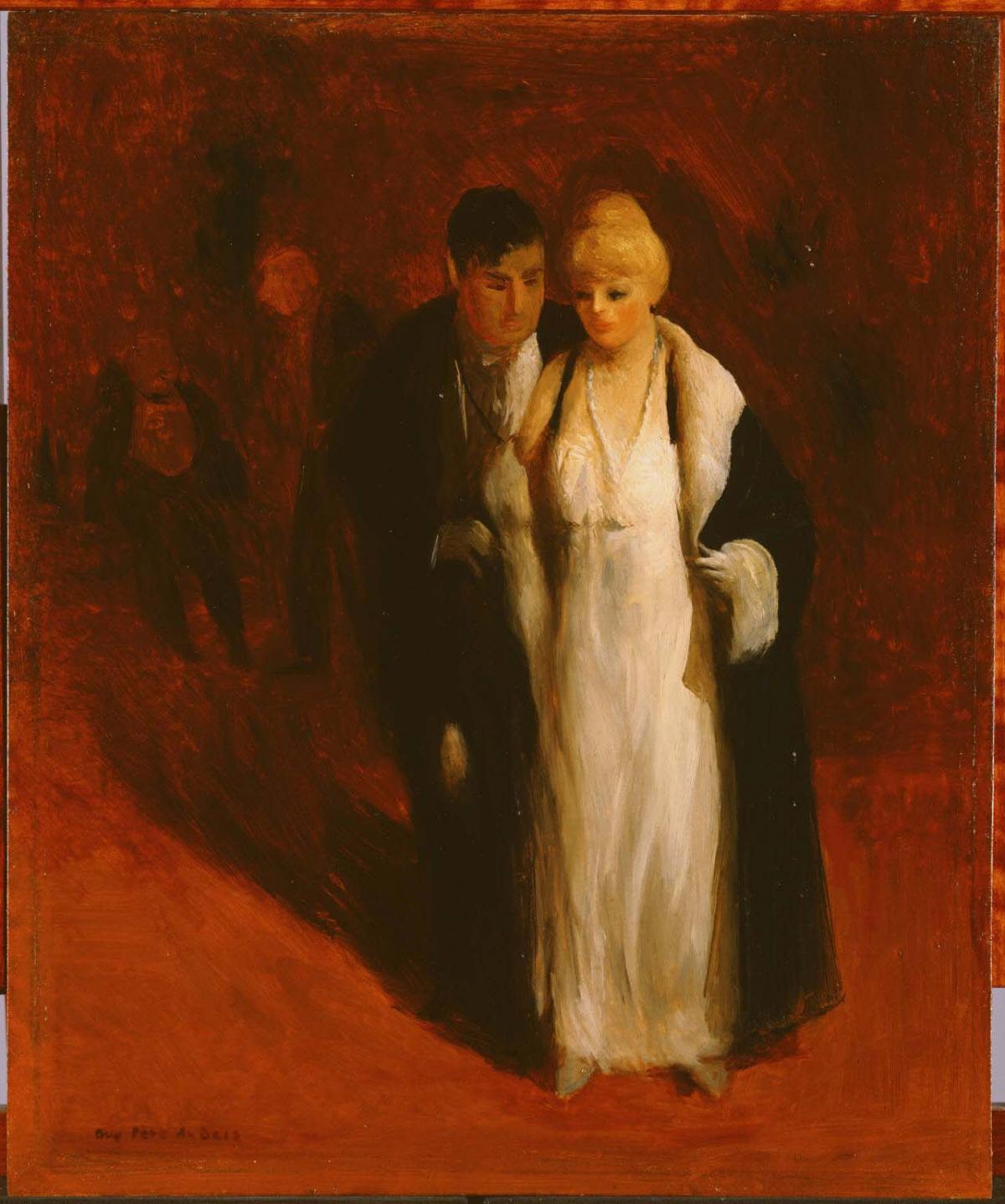The Arrivals
Guy Pène Du Bois ( between 1918 and 1919 )

In the early teens, Guy Pène du Bois abandoned the style derived from his teachers William Merritt Chase and Robert Henri—a limited dark palette and quick, gestural brushstrokes. With the help of sleek, stylized figures, he created parodies of the upper classes of society, which were familiar to him in his role as an art and opera critic. He received recognition in the New York art world and was praised by Duncan Phillips for his paintings of “solidly modeled figures, each one a puppet for the appreciative laughter of the worldly wise.”The Arrivals, painted between 1918 and 1919, helped create this reputation.
The specific incident in The Arrivals is unimportant; rather, what concerned Pène du Bois was the moment of display—the woman stepping into the spotlight, both literally and socially. Her partner, whom Pène du Bois has carefully obscured in shadow, helps her remove the fur-lined coat, revealing the long white gown and brocade necklace—all symbols of prosperity. The woman is further objectified by the vacuous expression on her face and the total lack of intimacy between her and her escort. The drama of her emergence is heightened by the sharp regression of the two male figures into the vague background; they serve to anchor the couple’s shadow and establish depth.
The sarcasm and wit he injected into his scenes attracted Phillips, who wrote: “Du Bois is to New York what Forain is to Paris, but his wit is less caustic and his weapon blunt by comparison. Whereas Forain is passionately concerned about the immolation of the victims of lust and war, du Bois avoids drama and grimness and tolerates the wicked world with a shrug and a smile.”